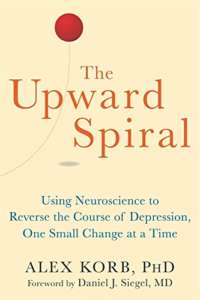Why workouts bring you euphoria
Anyone who has spent an hour working out has probably experienced what is called the “runner’s high.” After the first few minutes, you settle into a rhythm, the pain subsides into a sense of release or even euphoria. Scientists have been studying the effects of exercise to uncover the cause of the runner’s high, along with what other benefits it can bring.
What causes the runner’s high?
Endorphins are the most commonly known side effect of exercise and they have long been known to reduce pain, fatigue and contribute to the runner’s high. However, a 2014 study confirmed that another chemical compound, endocannabinoids (eC’s), also creates a feeling of calm and well-being induced by exercise, similar to the effects of marijuana.
 Dr. Jordan Tishler, a leading expert in the field of Medical Cannabis therapeutics, says that determining the cause of the runner’s high is highly complex. He told Rewire Me, “The endorphin and eC systems are not separate.” Thus, it’s impossible to tease out precisely which are causing each benefit because they both are activated by physical activity and both work to block pain.
Dr. Jordan Tishler, a leading expert in the field of Medical Cannabis therapeutics, says that determining the cause of the runner’s high is highly complex. He told Rewire Me, “The endorphin and eC systems are not separate.” Thus, it’s impossible to tease out precisely which are causing each benefit because they both are activated by physical activity and both work to block pain.
However, Tishler says the same study shows eC’s may work on significant number of systems: reducing pain, stress, anxiety, depression; increasing mood, metabolism, immunity, cognition, sense of reward and production of new brain cells; and possibly reducing craving for drugs, including marijuana, alcohol or nicotine.
Running and addiction
Although exercise can help reduce the cravings of addiction, one study shows a risk of addiction to running because of the way the eC’s interact with the brain’s reward system.
Ultra-marathon runner Dr. Shawn Talbott told Rewire Me, “The dose is the poison. You can get too much.” As a nutritional biochemist, he sees women cut their calories and exercise to the point of throwing off their hormones and spiraling into depression.
Dr. Tishler explains, “On a cellular level addiction to running and opiates are similar, but the behaviors and context are different.” Runners may have a compulsion to run when it’s not advisable for their health or other circumstances. People who take opiates may start buying drugs on the street or abusing heroin. Similar destructiveness but different behaviors and context.
Evolved to run?
 “Things that are good for us, we feel compelled to do based on our brain chemistry,” Dr. Alex Korb, neuroscientist and author of The Upward Spiral, explained to Rewire Me. “We get accustomed to exercise and get antsy if we don’t. But when you keep exercising and get the benefits, it’s a evolutionary trait for survival.”
“Things that are good for us, we feel compelled to do based on our brain chemistry,” Dr. Alex Korb, neuroscientist and author of The Upward Spiral, explained to Rewire Me. “We get accustomed to exercise and get antsy if we don’t. But when you keep exercising and get the benefits, it’s a evolutionary trait for survival.”
One study determined that dogs and humans appear wired to run by eC receptors that provide reward and potentially habit-forming behaviors. Talbott says, “Evolution has designed us to run, feel good and to catch more food. It’s a very elegant system.”
He asked physically active students, “If we found out tomorrow that exercise was bad for you, would you still do it?” Almost everyone said yes. “Most people say it makes them feel good. It’s so central to us as humans; it means we are supposed to be active. It’s not as simple as giving someone a pill for one compound,” Talbott explains. Exercise naturally creates the perfect combination.
But it’s important not to over-complicate the effects of exercise. “Any movement over being sedentary is going to start to have beneficial effects,” says Kolb.
If you aren’t currently active, start slow and progress over time. Get out and enjoy that “runner’s high” and its multitude of rewards, whatever the multifaceted sources scientists are still uncovering.



